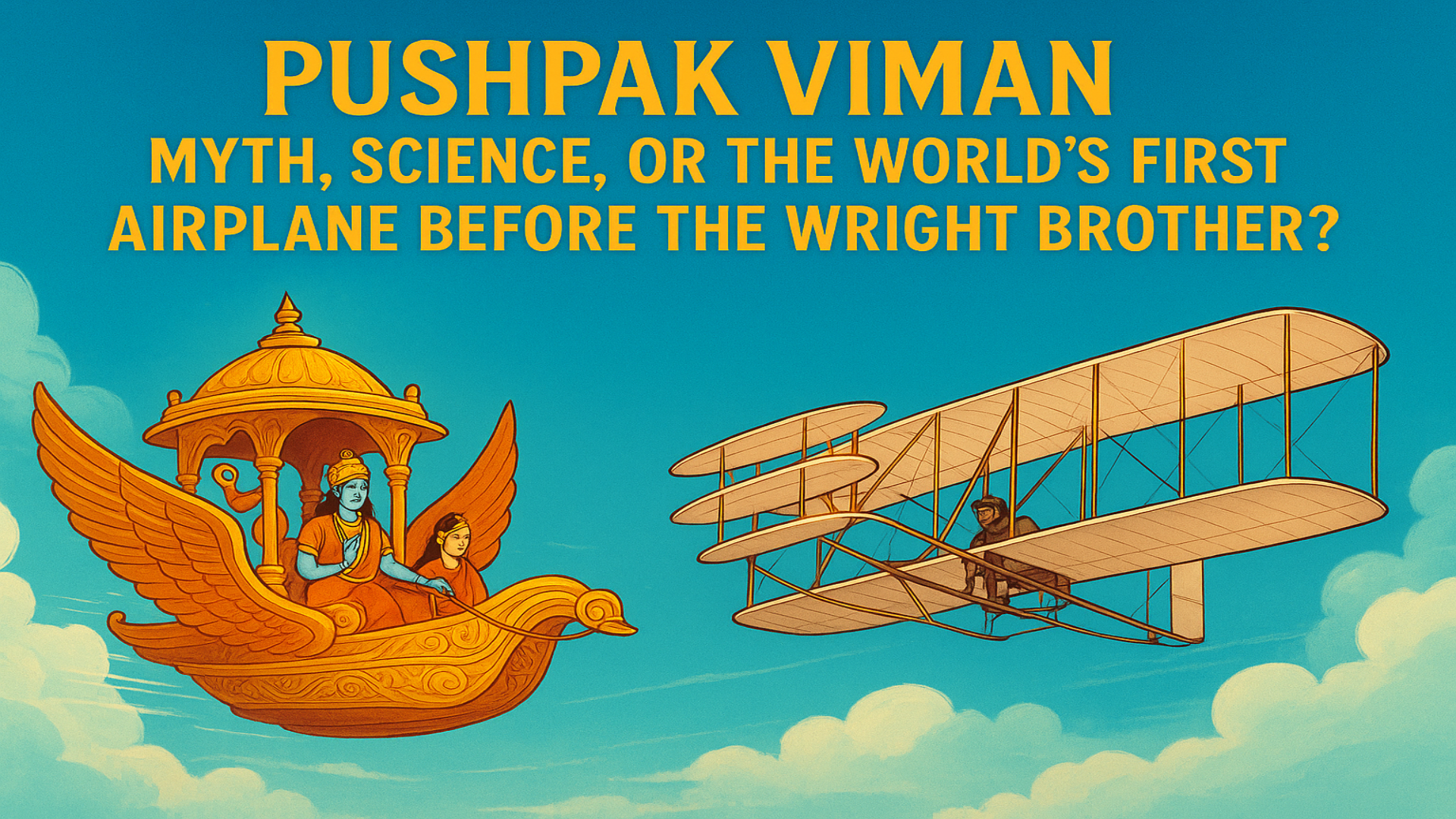Animals in World Mythologies: Sacred Symbols
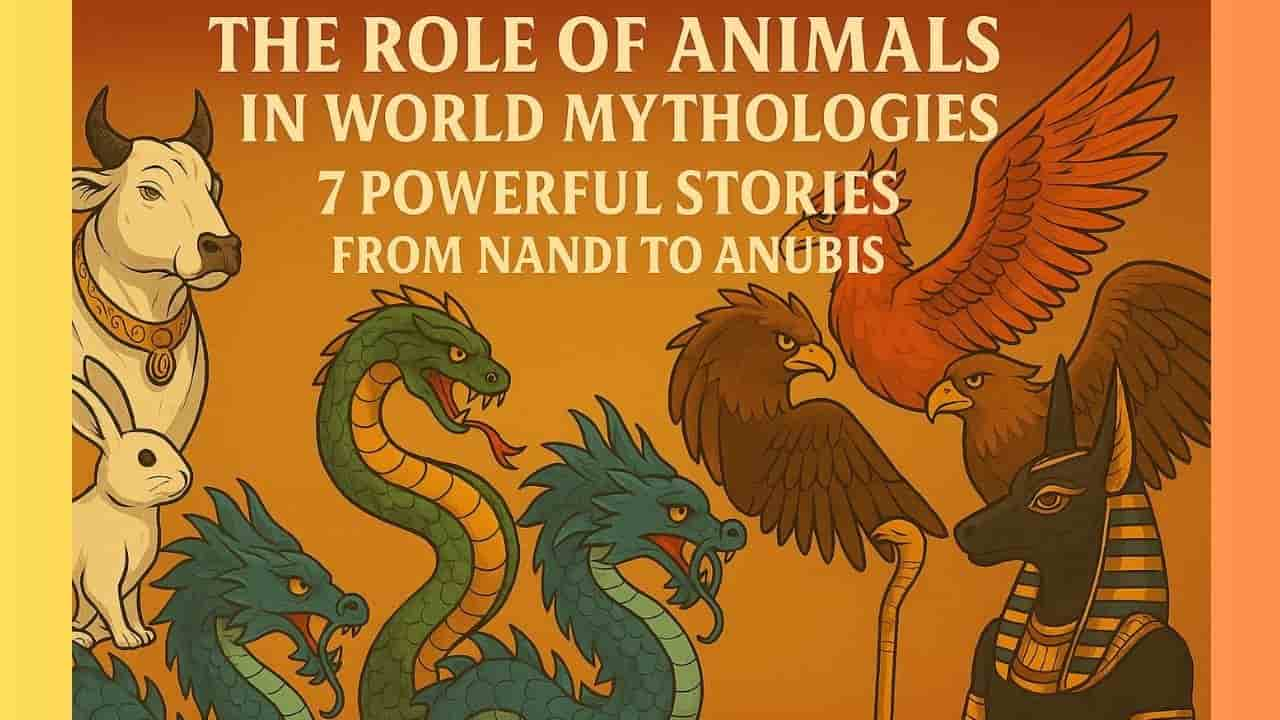
From the earliest stories told around fires to the great epics written in scriptures, animals have been more than just companions in human life.
They have been teachers, guardians, and symbols of divine forces. Across cultures and civilizations, animals in world mythologies hold a central place, representing everything from fertility and power to death and rebirth.
Unlike modern science, which sees animals through biology, mythology sees them through meaning. Whether it is Nandi, the devoted bull of Lord Shiva, or Anubis, the jackal-headed god of ancient Egypt, animals reflect humanity’s attempt to connect with nature and the unseen world.
1. Nandi: The Devoted Bull of Lord Shiva
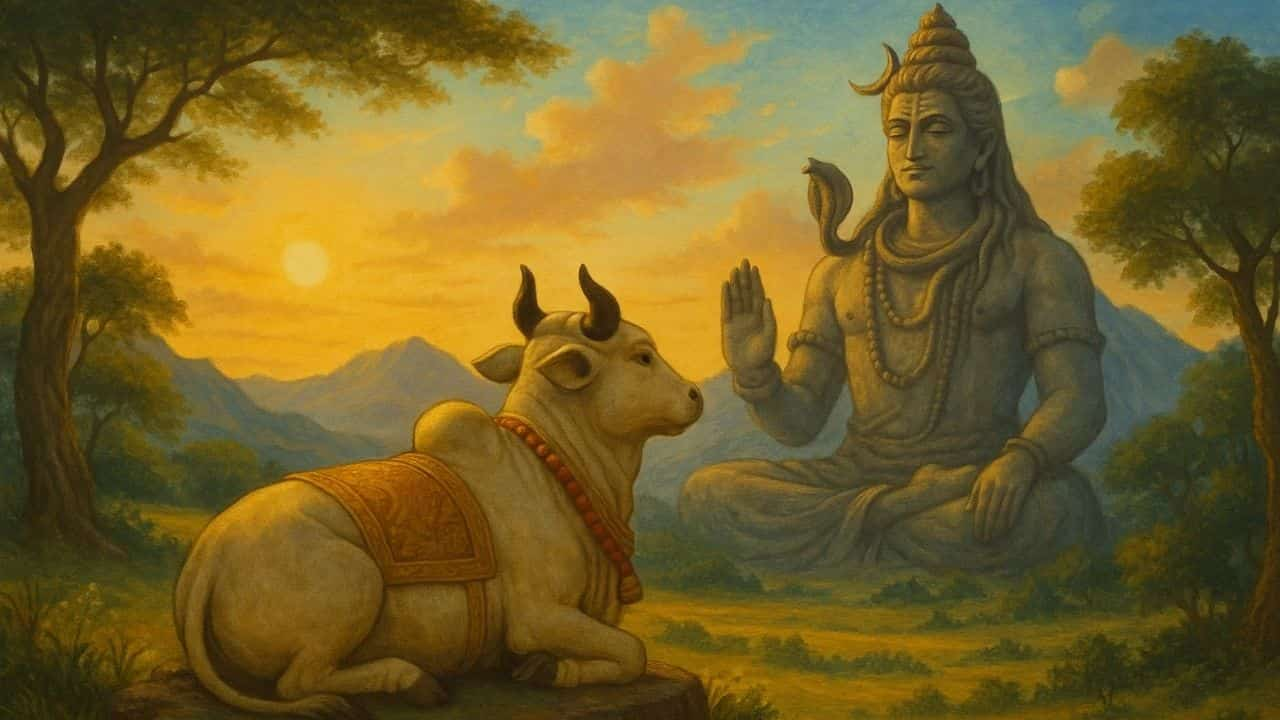
In Hindu mythology, no image of Lord Shiva is complete without Nandi, the sacred bull who sits patiently at his feet. Nandi is not merely a vehicle (vahana) but a symbol of loyalty, strength, and devotion.
Bulls have always been associated with fertility and agricultural prosperity, and Nandi embodies these qualities while also representing dharma, or righteousness.
Devotees entering Shiva temples often whisper their prayers into Nandi’s ears, believing that the faithful bull will pass them on to Shiva. In this sense, Nandi acts as an intermediary between humanity and divinity. Beyond religious worship, Nandi symbolizes discipline and devotion, qualities that remind us of the strength found in humility and loyalty.
2. Garuda: The Mighty Bird of the Skies
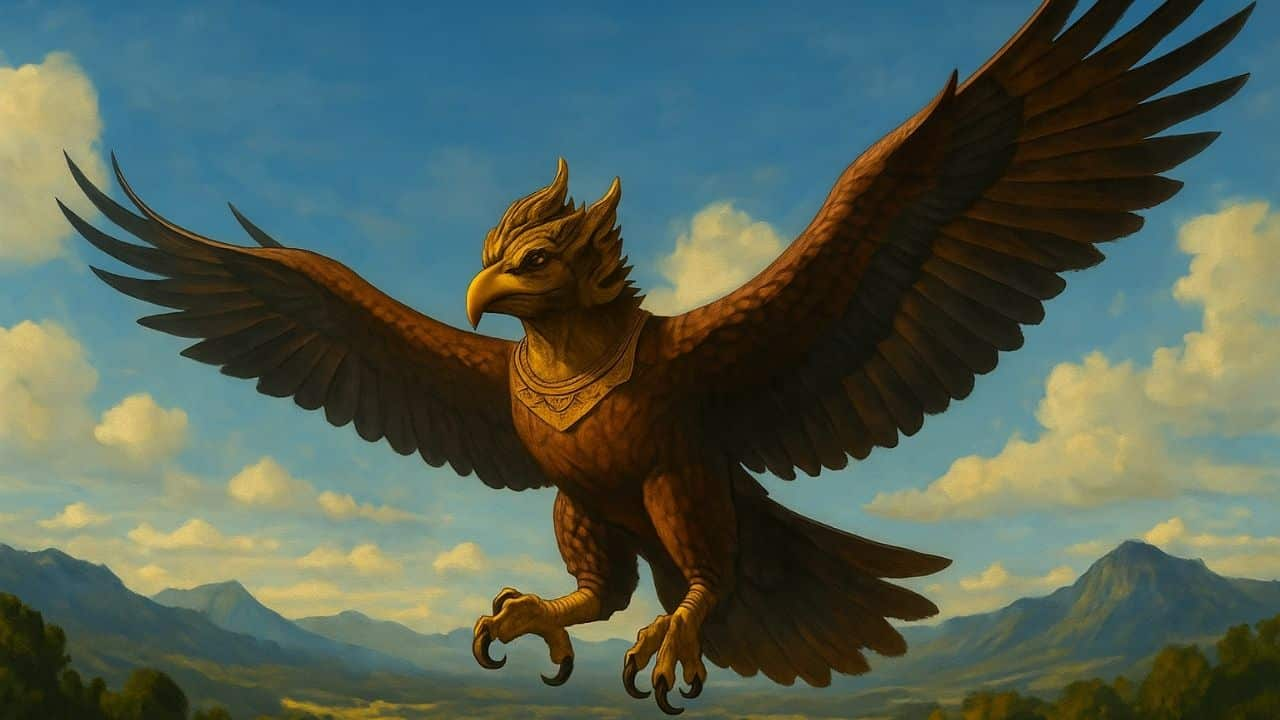
Another powerful animal figure in Hindu mythology is Garuda, the eagle-like creature who serves as the mount of Lord Vishnu.
Garuda represents freedom, speed, and courage. With his massive wings and radiant form, he is a protector who fiercely opposes evil, especially serpents, which symbolize chaos.
Garuda’s stories emphasize the victory of light over darkness, truth over deception. Even today, Garuda is a symbol of national pride in countries like Indonesia and Thailand, where his image appears on emblems and seals. His mythology reflects humanity’s fascination with the sky and the desire to rise above limitations.
3. Anubis: Guardian of the Dead in Ancient Egypt
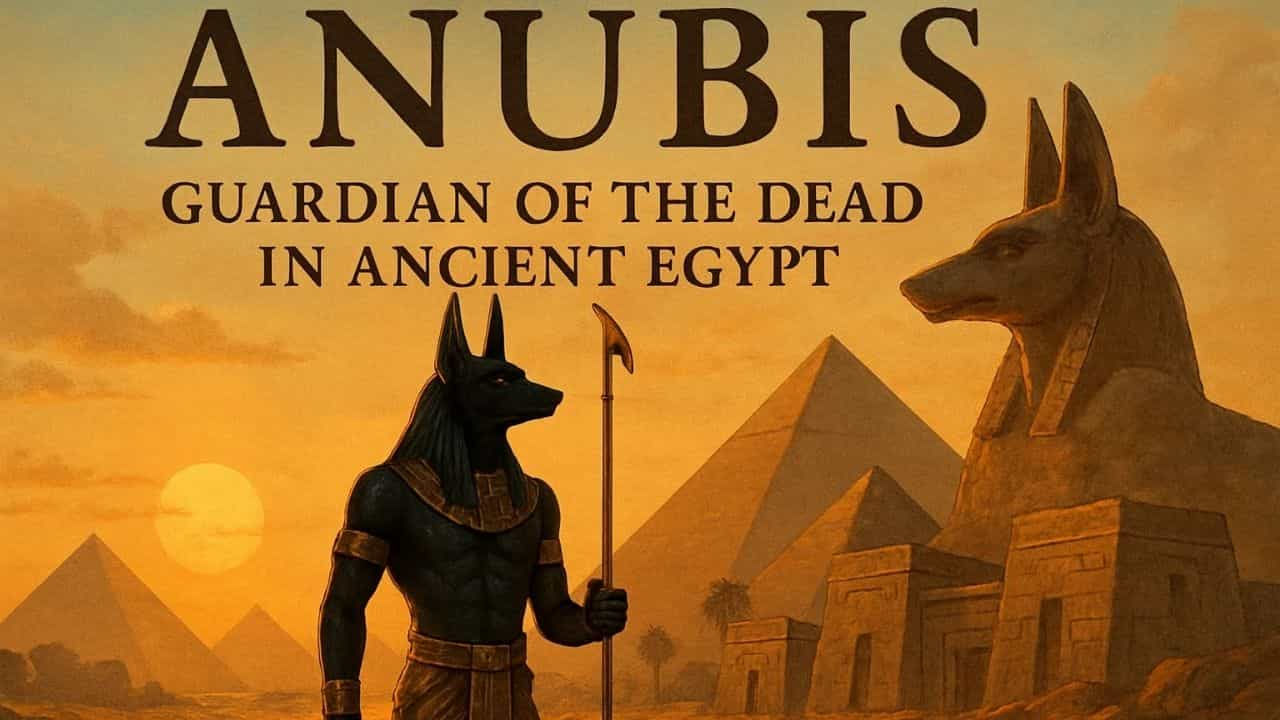
In ancient Egyptian mythology, animals were often combined with human forms to create gods who represented natural and spiritual forces.
Among them, Anubis stands out as the jackal-headed god of mummification and the afterlife. Jackals were scavengers often seen near cemeteries, and this natural behavior gave rise to their association with death and protection of the dead.
Anubis was believed to weigh the hearts of the deceased against the feather of Ma’at, the goddess of truth. If the heart were lighter, the soul could enter the afterlife.
Anubis thus symbolizes judgment, fairness, and the sacred passage between life and death. His presence shows how animals, often feared in daily life, became protectors in the spiritual imagination of ancient peoples.
4. Bastet: The Cat Goddess of Grace and Protection
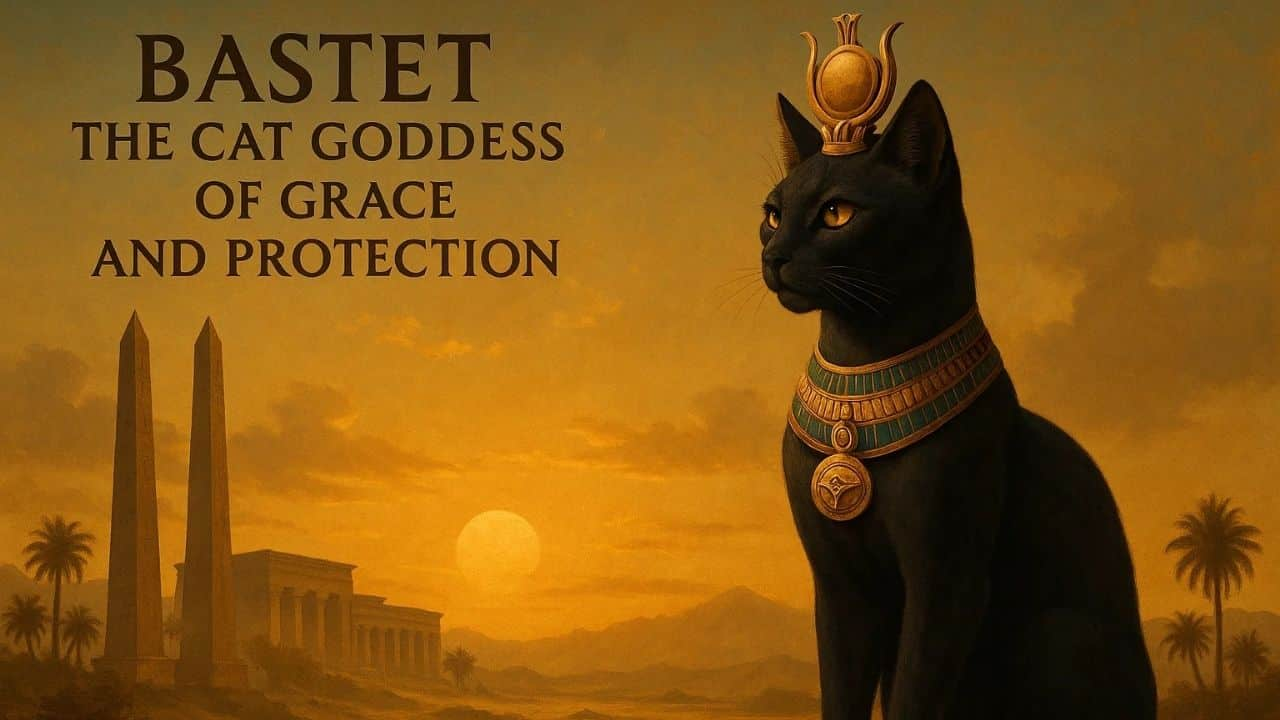
The Egyptians also revered cats through the goddess Bastet, depicted with the head of a lioness or domestic cat.
Bastet represented fertility, protection, and the warmth of home. Cats were cherished in Egyptian households not only for their ability to control pests but also for their mystical aura of independence and elegance.
Bastet’s dual nature, as a fierce lioness and a nurturing mother, captures the complexity of animals in mythology. They are never one-dimensional; they carry both gentleness and power, reflecting the dualities of life itself.
5. The Wolf in Norse Mythology: From Fenrir to Guardianship
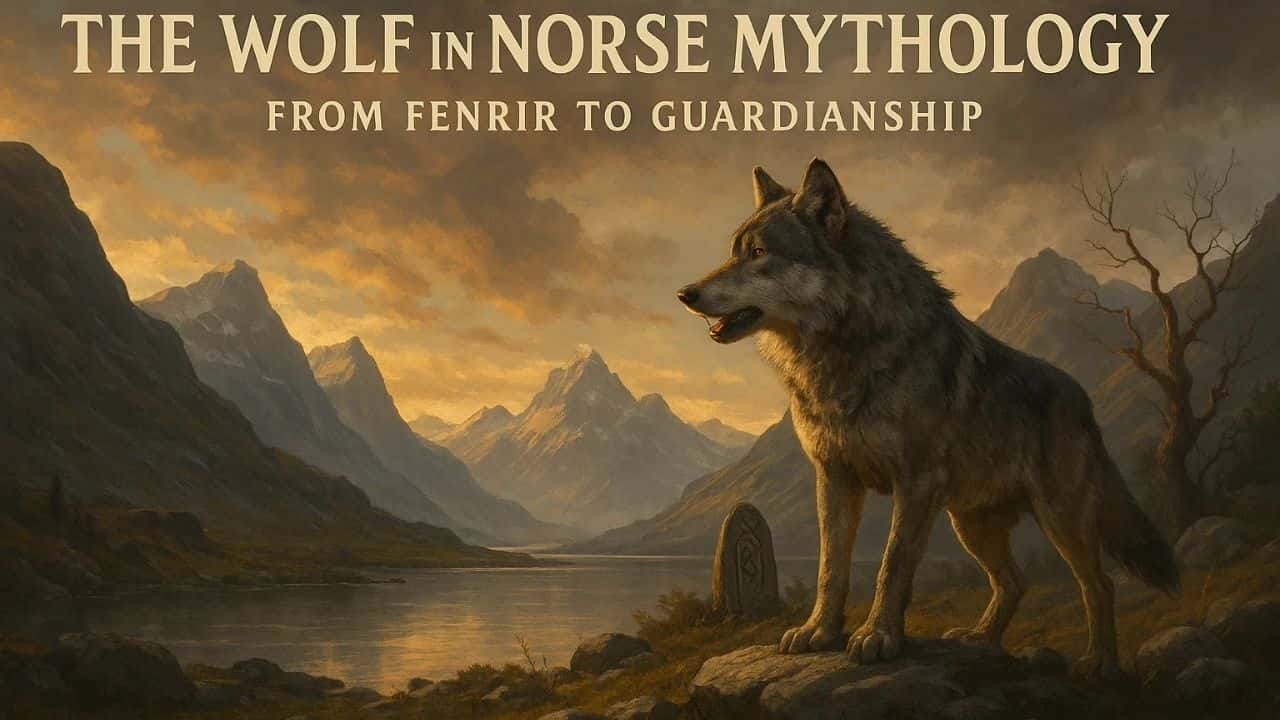
In Norse mythology, wolves play both destructive and protective roles. Fenrir, the monstrous wolf, is prophesied to break free during Ragnarok, the end of the world, devouring Odin himself. He symbolizes uncontrollable chaos and the destructive side of nature.
But wolves are not only negative figures in Norse tales. The wolves Geri and Freki are loyal companions of Odin, representing strength and courage. This dual role of wolves reflects the Norse worldview that nature is both friend and foe, something to be respected rather than controlled.
6. The Minotaur and Greek Animal Hybrids
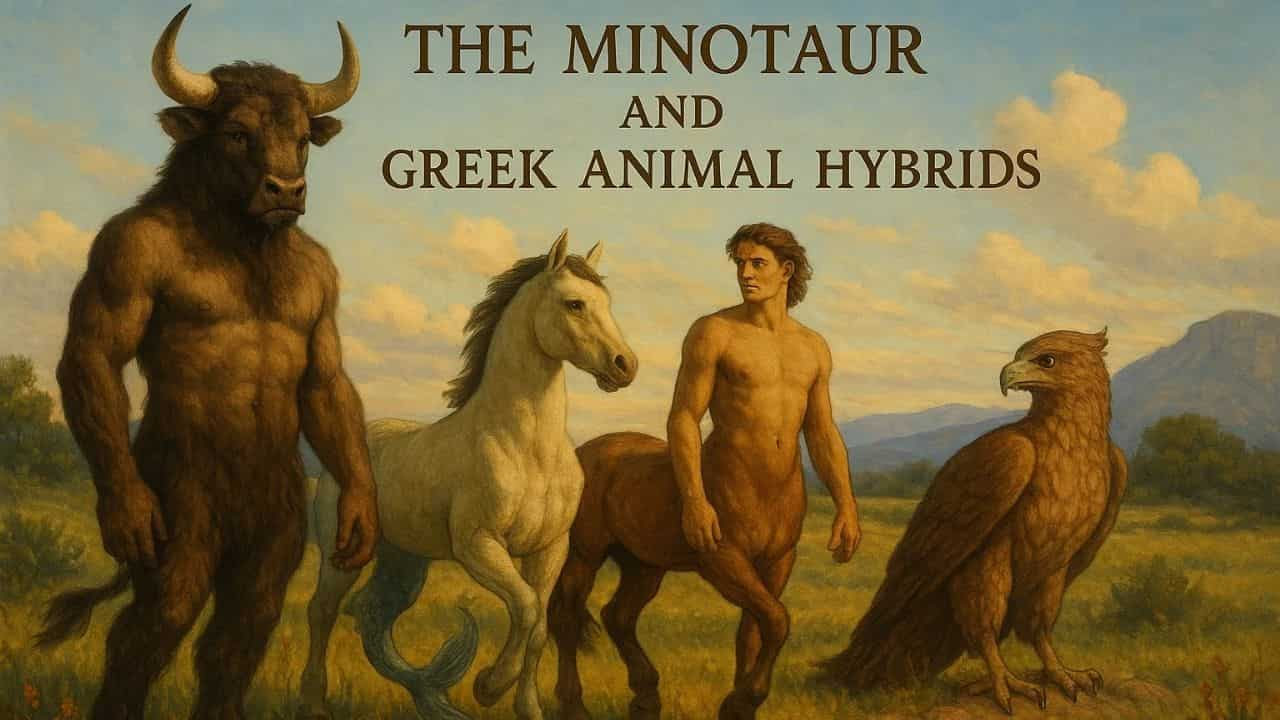
Greek mythology often blurred the line between humans and animals through hybrid creatures.
The Minotaur, with the body of a man and the head of a bull, embodies the dangers of unchecked desires and unnatural unions. Hidden in a labyrinth, the Minotaur was both feared and pitied, a reminder that humanity’s inner beasts can be more terrifying than external threats.
Other Greek myths feature Pegasus, the winged horse symbolizing inspiration and divine assistance, and Cerberus, the three-headed dog guarding the underworld. These creatures highlight how animals in Greek mythology often served as gatekeepers between worlds, whether heaven, earth, or the underworld.
7. The Dragon: A Universal Symbol Across Cultures
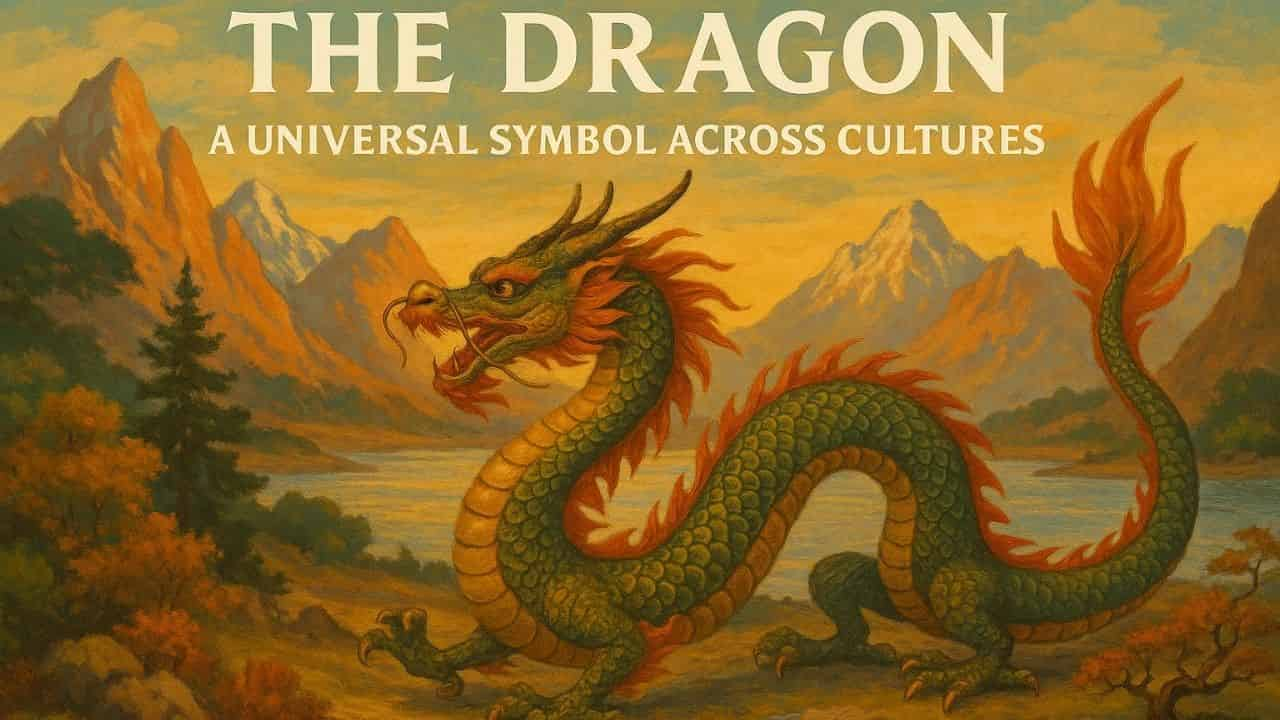
Few creatures appear as frequently in world mythology as the dragon.
In Chinese culture, dragons are benevolent beings representing prosperity, rain, and cosmic balance. They are celebrated during festivals and seen as guardians of the natural order.
In contrast, European dragons are often depicted as destructive monsters hoarding treasures and needing to be slain by heroes. This difference reflects cultural attitudes toward nature. Asian myths often celebrate harmony with the natural world, while European myths portray it as something to be conquered.
Dragons remind us of the universal human fascination with power, danger, and mystery embodied in a single creature.
Animals in World Mythologies: As Cosmic Bridges
Animals in world mythologies often serve as bridges between worlds. Horses like Uchchaihshravas in Hinduism or Sleipnir in Norse mythology connect mortals to gods.
Birds symbolize the soul’s freedom, moving between earth and sky. Serpents appear in countless myths, embodying both wisdom and danger, life and death.
These roles reveal humanity’s recognition of animals as beings that live closer to the elements, earth, water, and sky, making them natural messengers between humans and the divine.
Animals in World Mythologies: Symbolism and Lessons
What makes animal myths powerful is not just the creatures themselves but the values they represent.
Nandi teaches loyalty and devotion, Garuda represents courage, Anubis embodies justice, and Bastet reflects the balance of gentleness and strength. Wolves, dragons, and hybrids remind us of nature’s unpredictability and humanity’s own inner conflicts.
Through these symbols, myths encourage humans to reflect on their relationship with the natural world. They remind us that animals are not just resources but spiritual companions, shaping human imagination across time.
Modern Relevance of Animals in World Mythologies
In today’s world, where animals often face threats from deforestation, climate change, and exploitation, mythology offers a reminder of the respect once given to them.
Seeing animals in world mythologies can inspire more responsible attitudes toward conservation. The idea of animals as guides and protectors challenges us to rethink our place in nature, not as rulers but as co-inhabitants of a shared world.
Modern literature, films, and popular culture continue to draw on these myths. From dragons in fantasy novels to Anubis-inspired figures in games and movies, the symbolic power of animals remains as strong as ever.
The Timeless Bond Between Humans and Animals in World Mythologies
Animals have always been more than creatures that share our earth. In mythology, they are guardians, companions, and mirrors of human hopes and fears. From Nandi’s patience to Anubis’s judgment, from Bastet’s grace to the dragon’s mystery, they carry messages that transcend time and culture.
These stories remind us that mythology is not only about gods and heroes but also about the creatures that walk, fly, and crawl beside us. By honoring them in myths, ancient cultures expressed gratitude for their presence in life.
In remembering these stories today, we too can find renewed respect for the animals that remain vital to our world and our imagination.

